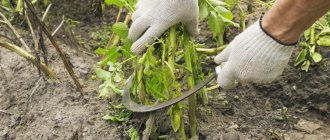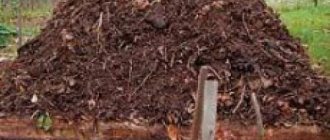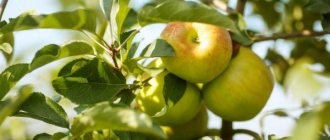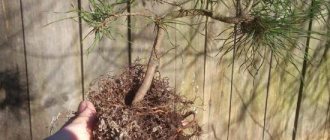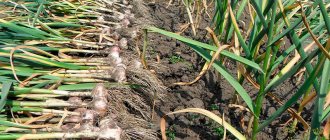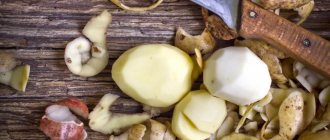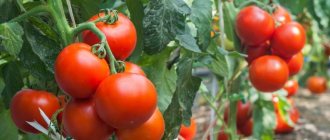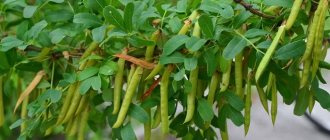Is it possible to bury fallen apples in the garden? Why you need to immediately remove fallen apples
In almost any garden, during the ripening of fruits, carrion may appear. Not only pears or apples fall, but also plums and other fruits. When there is too much fruit under the trees, gardeners need to wonder what's wrong with their garden.
Why do apples fall
There are usually several reasons:
— Presence of insect pests. It is the codling moth that causes apples to fall.
— Drought, and as a result, drying out of the soil under the fruit trees. After all, during the fruiting period, plants require much more moisture than at other times.
— Strong gusts of wind.
— Diseases of fruit trees.
— Incorrect use of fertilizers and fertilizers.
— Untimely fruit removal.
If gardeners carefully observe their orchards, they will be able to understand why apples are falling off.
What to do with carrion
Here the answer should be unambiguous - get rid of it as quickly as possible, clearing your summer cottage of rotten fruits, and, consequently, from introducing various infections, pests and diseases that will appear in the garden in the next season.
Worms, also known as codling moth larvae, crawl out of fallen apples the next day. Therefore, if possible, carrion should be removed daily.
After collecting fallen rotten and wormy apples, you should not use them as compost material. Those gardeners who transport carrion to the compost heap are making a serious mistake. After all, the worms, having got out of the fallen apples, will attack other fruits or hide somewhere in a cozy place for the winter. And next spring they will show you everything they are capable of.
Therefore, the best option for carrion is to bury it in a hole, the depth of which should be at least 40-50 cm. Moreover, having removed the apples into such a hole, you then need to not just throw the earth in, but trample it thoroughly, compact it so that pests can no longer were able to get out of there.
And if the apples that fell from the tree are clean and without signs of pests and diseases, what can be done with them? Such fruits can be processed. You can make jam, compotes, wines from them, they can be dried and used in baking. But such apples are not suitable for winter storage, even if they look quite healthy.
And to prevent the apples from falling, the trees can be sprayed with biological preparations: Fitoferm, Lipidotsid, Iskra-bio, Agrovertin. Already 3-4 days after treating fruit trees with these preparations, you can remove the fruits and eat them.
Is it possible to put carrion in compost?
In case of composting, there is no need to be afraid of pests and spores living in the carrion, which actually led to the premature dropping of fruits from your favorite fruit trees. To prevent the spread of pests and diseases, and to prevent worsening problems in the orchard, carrion really needs to be collected from the soil under the trees as quickly as possible. But don’t rush to throw it away, bury it or burn it.
Not only that, carrion with minor damage, immediately lifted from the soil, can be quite successfully used for preparing compote or other drinks (as in cooking that involves heat treatment). Feel free to collect all other fruits, even the rotten and most wormy ones, which you don’t want to touch, and place them in the compost heap.
Compost. © Dorling Kindersley
The nutrients contained in the carrion will speed up the process of compost maturation and allow you to achieve a completely new quality of organic fertilizer. And all the minerals, vitamins and microelements from the fruits will only enhance the characteristics of your homemade organic fertilizer and increase the activity of beneficial microorganisms and worms. But fungal spores, harmful bacteria and insect pests, which led to fruit drop, will not be preserved during the composting process at all.
Where spores of the same rust flourish at elevated temperatures, apple tree pests simply burn out. As a result of elevated temperatures, all sources of carrion on fruit trees will certainly die and no traces of them will remain.
Apples acidify the soil.
Do apples acidify the soil?
Do apples acidify the soil?
Every gardener knows that organic fertilizers are irreplaceable, accessible components for maintaining soil fertility.
The health of plants and, as a consequence, the quality and quantity of the future harvest will depend on the content of nutritional chemical elements in an accessible form.
When adding organic matter, the soil structure improves. It becomes looser and retains more moisture.
One of the popular organic fertilizers for the garden is compost, which is formed during the life of microorganisms that decompose organic matter.
Classic compost components:
- nitrogenous (litter, manure, peat),
- and carbonaceous (straw, weed) components.
However, not every organic matter from the garden is suitable for making compost.
For example, diseased or pest-infested parts of plants should not be used.
The main, classic component of natural organic fertilizer is considered to be green mass, as well as other decomposing waste from the garden.
And today, we will look at one unusual compost component - fruit carrion.
In fruitful years, owners of summer cottages with apple trees or orchards have no idea what to do with the numerous fallen apples that have already rotted. Not many people know that fallen apples are an excellent, free fertilizer for your garden!
Carrion is a quickly decomposed biological component; it includes many nutrients, such as minerals, micro and macroelements (large amounts of available potassium), as well as vitamins.
In combination with manure, humus, plant residues, as well as mineral fertilizers, compost is obtained whose nutrient content is superior to ordinary compost.
Why is the use of apples as fertilizer not popular?
- Many gardeners are afraid of using fallen apples as fertilizer for their plots, fearing the spread of infections.
And this is partly true. However, when rotten apples are used in compost, during the process of “ripening” from elevated temperatures, pathogens and spores, as well as apple tree pests, die.
- Another misconception is that “apple” compost strongly acidifies the soil.
It can be noted that any organic matter, as well as most mineral fertilizers, have the ability to shift the pH level to the acidic side. It is advisable to control the soil balance and liming the soil every few years using wood ash, lime or dolomite flour.
Compost enriched with fruit carrion is used for basic application to the soil, as well as as a mulching composition.
When not to put fruit litter in compost
In some cases, it is strictly not recommended to put carrion in compost. This applies to fruits affected by a fungal infection. On such apples and pears, black spots (scab) or dark coating (sooty fungus) are clearly visible. Signs of damage can also be seen on the bark of trees.
Apples with signs of fungal infection should not be put into compost.
Infected fruits cannot be added to compost, as the pathogens are quite resistant. They can infect the entire pile and make the fertilizer unusable. When laying such carrion, the compost should mature for about 2 years. During this time, pathogens and their spores will lose activity. But not all gardeners have the ability to maintain such a time interval. It is easier to take the affected apples and pears to a separate hole away from the garden.
It is prohibited to place carrion from trees treated with potent herbicides and insecticides on the compost heap. At least 2 weeks must have passed since the last treatment.
Is it possible to bury apples in the garden? How I make fertilizer from fallen apples
Fallen apples can be an excellent organic fertilizer for your garden.
But they must be used correctly!
fallen apples - “carrion”
Many authors suggest simply burying apples in the beds; I think this is dangerous.
As you can see in the photo, many apples are infected with fungus. Simply burying rotten apples will spread fungal spores throughout your garden. It will not disappear into the ground.
There are 2 great ways to turn fallen apples into fertilizer.
1. Method
Setting up a compost pit and barrel
A compost pit is a depression in the ground where weeds, tops, grass clippings, and manure are placed. Cover the top with a film so that it does not dry out and for 2-3 months fermentation processes take place in it, while the temperature rises to 80 degrees. All sweat flora will die.
Then, the rotted compost is used as fertilizer.
It would be great to put our “carrion” from the apple trees in such a hole.
compost pit (photo from open source)
2. Method
We place fallen apples in warm beds.
The warm bed is made according to the principle of a compost pit. The organic filling, gradually decomposing, provides the plants with warmth and nutrition.
A trench is dug in the prepared bed, fallen apples, grass, and weeds are placed there. All this is covered with layers of earth. The top layer is fertile soil.
warm bed (photo from an open source)
Important!
Apple fertilizer can acidify the soil; many crops do not like this. The easiest way is to add ash or lime.
What kind of carrion can be put in compost?
The question of which carrion to use is ambiguous. It is difficult to use carrion from stone fruits, unless you compost for several years: the pits of plums, cherry plums, and cherries simply do not have time to decompose. But apples and pears are perfect. As well as rotten berries of any kind dropped by plants.
Experienced gardeners recommend removing apples and pears that have fallen from trees from the orchard. In most cases, carrion can be put to good use by placing it on a compost heap.
